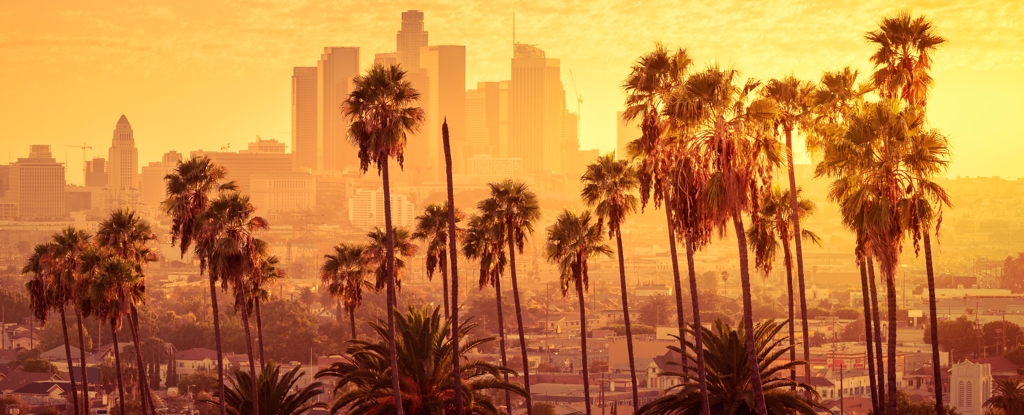Vehicle emissions in California have steadily declined over the years as environmental policies and advancing technology clean up traffic exhaust.
Yet, since 2010, microscopic particulate matter and ground-level ozone have stubbornly refused to decline, thanks to an increase in “secondary sources.” Some of these sources include the trees and shrubs that make our city streets greener.
To map the emissions, a team of American researchers flew into the sky above Los Angeles nine times in June 2021 to directly measure the fluctuating concentrations of volatile organic compounds (VOCs). These are precursors to particulate matter and ozone pollution that can come from plants.
Unlike previous maps, which estimated emissions from known sources or modeled the movement of emissions, this recent airborne approach could directly measure air pollutants several times per second. This was achieved using an on-board mass spectrometer, which describes the distribution of more than 400 types of emissions in unprecedented detail.
By combining the results with temperature patterns down to a resolution of 4 kilometers squared (about 2.5 miles squared), the team determined that botanical sources of VOCs, including compounds such as isoprene, monoterpenes, and sesquiterpenes, contributed to about 60 percent of the potential formation of VOC secondary organic aerosols in early summer in LA.
Since these botanical emissions increase during warm weather and drought, the problem could get worse as the summer progresses, and the researchers predict that this is a problem we need to stay on top of as the world warms.
Air pollution remains a significant health problem worldwide, despite efforts to reduce toxic emissions from transportation and industry. Fine particulate matter as small as micrometers increases the risk of heart disease and low birth weight, while ozone in the air we breathe is linked to respiratory illness and increased mortality.
The key to the formation of these two potentially toxic substances are volatile organic compounds (VOCs). This is a wide variety of chemicals that directly affect our health and react in sunlight and the atmosphere to form particles and gases such as ozone.
It is estimated that 4.2 million premature deaths are caused by air pollution each year, mainly in urban areas. Health authorities are therefore keen to find better ways to identify sources of volatile organic compounds so that they can be reduced in our biggest cities.
There is no end to the potential producers of these ubiquitous compounds, with everything from pesticides to hair products, car upholstery and cleaning products sweating out a type of substance capable of generating something nasty in small quantities. So it’s no surprise that volatile chemicals now account for half of VOC emissions from fossil fuels in industrialized cities.
What is perhaps surprising is that the very green spaces that define clean living generate their own compounds in the form of terpenoids, which the analysis showed accounted for approximately 16 percent of the measured mass flow of VOCs.
There is a heated debate about the significance of biogenic versus industrial sources, especially when higher temperatures are taken into account.
“Emissions of monoterpenes and sesquiterpenes generally increase exponentially with temperature, while emissions of isoprene are known to increase with temperature and light and ultimately decrease above a certain temperature threshold,” the researchers said in their study.
Knowing that the potential of urban gardens to contribute to pollution is no reason to reduce green spaces, which themselves keep temperatures cooler and improve our health in other ways. Some can even remove certain types of VOC from the air.
However, to maximize their benefits, it would be useful to better understand how factors such as drought can increase large-scale biogenic VOC emissions, and how the discarded flowers of plants such as jacarandas – one of the most common species in Los Angeles, even though are not native – contribute organic precursors themselves. Or even determine which types of plants might be lower emitters as global temperatures inevitably continue to rise.
This research was published in Science.
